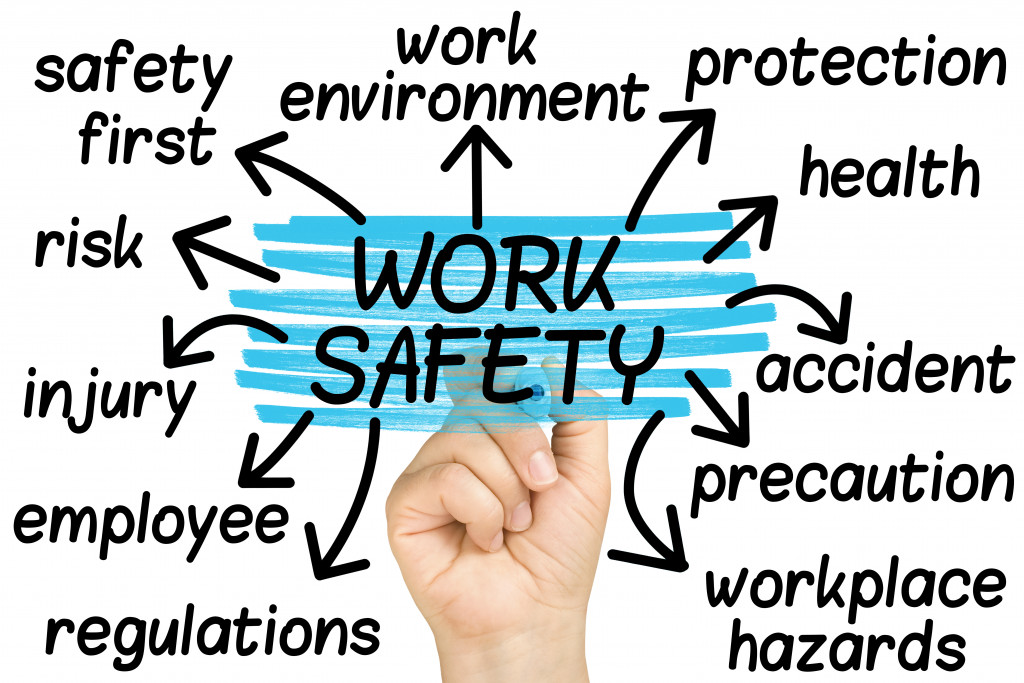As the company owner, you are responsible for maintaining a safe and healthy workplace for your staff. A safety program, or a safety and health management system, can help you focus on areas that will improve your work environment. Whatever term you use, your plan emphasizes what your employees should do to prevent illnesses and personal injuries at work.
A unique system in place will reflect how you do business, the hazards in the workplace, and how you ensure the safety and health of your workers.
In general, if you have a small business in an industry with minimal risks, employee safety procedures may only include listening to your employees’ concerns and acting to solve them. On the contrary, large companies in risky industries may need notebooks filled with detailed policies and rules governed by a full-time safety director.
Overall, the key here is ensuring that your safety system works for your organization. You have the power to decide on the best ways to maintain a safe environment for your workers.
Components of a Successful Safety System
You may have a safety system in place, but how will you know if it’s working? Listed below are the components of a successful safety system:
- Your managers are committed to ensuring that the program works.
- The employees are involved in the program.
- You have a system that can identify and keep hazards in control.
- You’re complying with Occupational Safety and Health Administration (OSHA) regulations.
- You provide training on safe work habits.
- Constant improvement
Take a moment to assess your safety and health system. Some components could be vigorously implemented, while others may need further improvement. For example, you may have an excellent training program for your employees on safe work practices, but you don’t even have a medicine cabinet for first aid kits and medicines. If this is the case, purchase a narcotic cabinet, some pain relievers, bandages, and a first aid kit for emergencies.
Ways to Keep a Workplace Safe
Small businesses usually do not have the resources to hire professional help, but you can always set up your own system according to your employees’ needs. How will you do that? Read below.
Be Committed
Being committed to implementing safety and health programs is essential to ensure success. You can engage yourself by doing the following:
- Write a policy that states the importance of safe work practices.
- Commit your resources (money, time, personnel) to protect your staff.
- Include safety topics in your meetings.
- Encourage employees to participate in safety and health habits.
- Follow the policies to show your employees how serious you are in providing a safe work environment.
- Do not ignore reports of unhealthy or unsafe conditions, and respond to them accordingly.
- If illnesses or injures happen, find the cause.
Involve Your Employees

Employees play a crucial role in the success of your health and safety program. After all, the safety of all organization members is the responsibility of everyone. Encourage your employees to be more involved if you want the program to succeed. Make sure that everyone does their part and hold people accountable.
- Build a committee for workplace safety and health
- Make it a habit to perform safety infections
- Update employees about safety inspections, illness and injury statistics, and other issues related to their safety.
- Provide everyone with a helpful activity that supports their safety.
- Listen to employee feedback and input. Often, they know more about safety issues than managers do.
- Allow employees to review and improve the program.
Determine and Control Work Hazards
Before you can control hazards, you must identify them first. Here’s how to do that:
- Review your records of injuries, accidents, close calls, and illnesses.
- Check OSHA logs, workers’ compensation reports, first aid logs, and complaints.
- Look for the common factors or trends in protective equipment, department, location, parts of the body, time of shift, and kinds of injuries.
- Talk to your employees.
- Review reports of inspection from insurance surveys, enforcement inspections, or consultations
- Educate yourself about the OSHA regulations
- Inspect the workplace yourself for health and safety problems.
Train Employees
Train your employees about the dangers they could be exposed to while at work and how they can protect themselves. Here, you can provide the following:
- General orientation for new hires or preparing employees for new roles.
- Special training on hazardous functions and how to do their tasks safely.
- Retraining to update them about new regulations or when they need to do a different job.
Your responsibility as an employer goes beyond hiring and employing people. You also have to provide a work environment that keeps them safe and protected from potential injuries. Create policies for health and safety and make sure to follow the rules as well.

